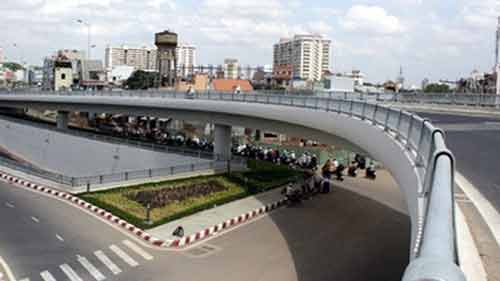Meeting the infrastructure imperative
(VOV) - Investment in public infrastructure must be substantially increased to ensure the nation’s future socio-economic development plans as outlined by the National Assembly, said speakers at a seminar late last month in Hanoi.
“Investment in transportation, water and energy infrastructure is vitally important for economic growth and job creation,” said Nguyen Tu Anh from the Central Institute for Economic Management (CIEM).
Anh, who is the Director of CIEM’s Research Department on Macro-Economic Policies, said the sources of global concessional loans for infrastructure are stagnating, creating a new impetus for restructuring existing public investment to obtain the highest rates of return.
“Non-concessional loans, could help bridge the financing gaps but these types of financing arrangements most often pose a significant threat to long-term macroeconomic stability as they typically create especially heavy repayment burdens,” said Anh.
At the seminar, Anh made the argument that infrastructure investment as a percentage of GDP will actually fall over the next few years if remedial actions are not timely implemented and investment broadened.
Notably, Anh said institutional investors such as investment banks, private equity funds, infrastructure funds, insurance companies, and endowment funds, have shown increased interest in infrastructure during the past several years.
Private equity investments in infrastructure have globally come to be viewed as an emerging asset class or ‘sector’, which allows private investors to acquire public infrastructure assets or invest in state-owned companies.

Private investments are generally made in one of three ways. Public-private partnerships enable private companies to build and/or operate new infrastructure projects under concession agreements.
Privatization allows private investors to directly acquire public infrastructure assets or invest in state-owned companies. Finally, private-to-private transactions facilitate the transfer of public private partnership interests between two or more private parties.
Anh said the public-private partnership model with the creation of a trading market has been the method of choice over recent years for private investors looking to add infrastructure assets to their portfolios.
However, the public-private partnership model has been hampered in Vietnam by a lack of the crucial legal framework allowing for their implementation of a market mechanism allowing for the free flow of capital between investors.
Return on Investment
From the investor perspective, infrastructure ‘sector’ investments typically aim for 10% to 12% annualized returns for core real estate investments that have relatively stable long term cash flows.
While opportunistic funds aim for around 19% for infrastructure investments that don’t have stable cash flows and are considered higher risk.
No matter what the rate of return expectations are, investors often are required to lock in a minimum investment of US$10 million for a minimum of 10 years— with some funds even requiring a 25-year lock-in period.
Expanding opportunities
Anh emphasized Vietnam lacks a developed private infrastructure investment platform and can benefit tremendously from such funding to assist the national and local governments in meeting the expanding infrastructure demands of the nation.
By putting completion of the legal framework for public-private partnerships on the front burner, the nation would be better positioned to attract private equity and real estate funds to achieve the nation’s long term socio-economic goals.
